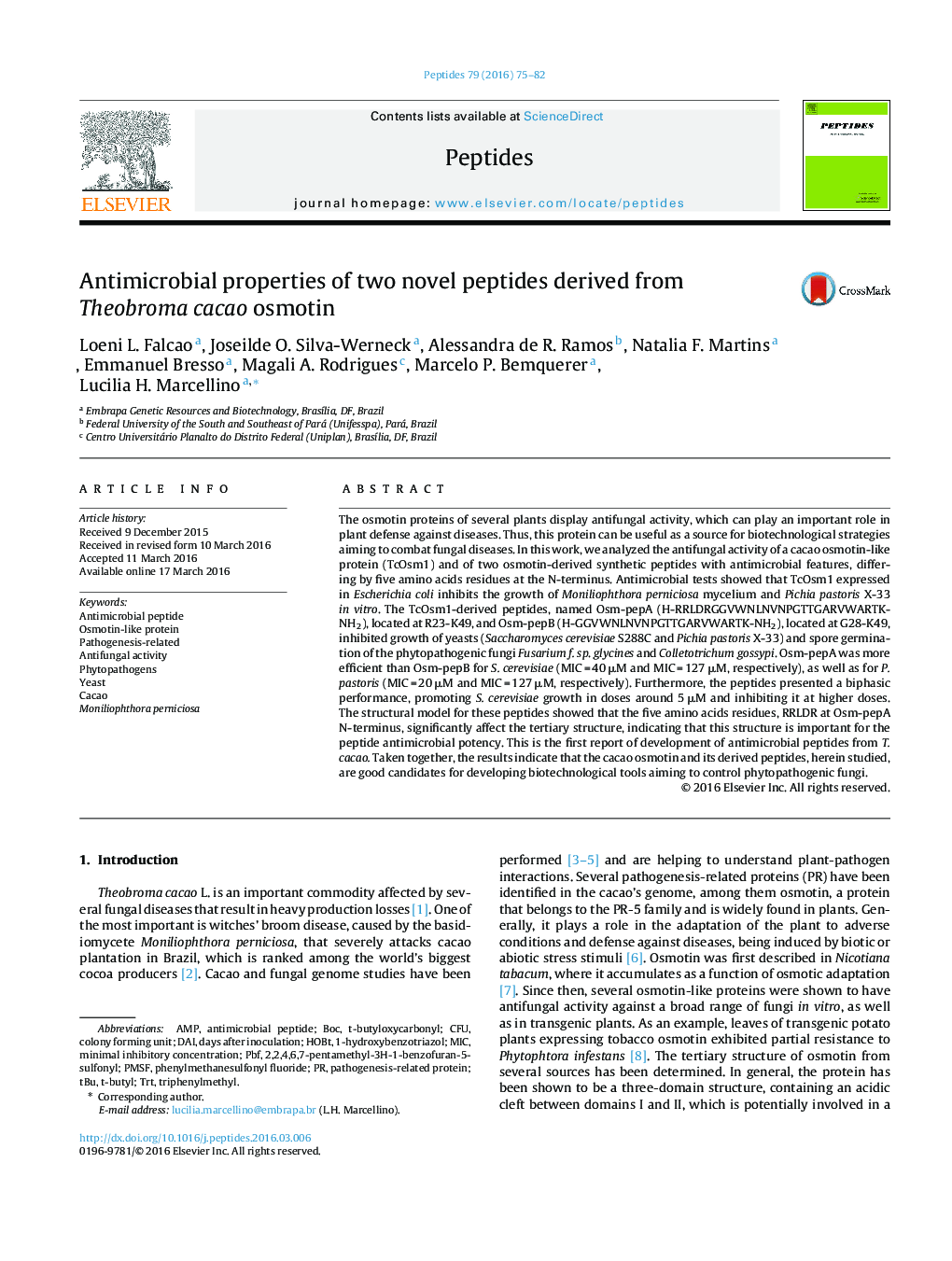| کد مقاله | کد نشریه | سال انتشار | مقاله انگلیسی | نسخه تمام متن |
|---|---|---|---|---|
| 2005878 | 1541700 | 2016 | 8 صفحه PDF | دانلود رایگان |

• Development of two novel AMPs from a T. cacao osmotin-like protein.
• The cacao osmotin-derived AMPs are active against yeasts and some fungal phytopathogens.
• The 3D-structures of the cacao osmotin-like protein and its derived peptides are predicted.
The osmotin proteins of several plants display antifungal activity, which can play an important role in plant defense against diseases. Thus, this protein can be useful as a source for biotechnological strategies aiming to combat fungal diseases. In this work, we analyzed the antifungal activity of a cacao osmotin-like protein (TcOsm1) and of two osmotin-derived synthetic peptides with antimicrobial features, differing by five amino acids residues at the N-terminus. Antimicrobial tests showed that TcOsm1 expressed in Escherichia coli inhibits the growth of Moniliophthora perniciosa mycelium and Pichia pastoris X-33 in vitro. The TcOsm1-derived peptides, named Osm-pepA (H-RRLDRGGVWNLNVNPGTTGARVWARTK-NH2), located at R23-K49, and Osm-pepB (H-GGVWNLNVNPGTTGARVWARTK-NH2), located at G28-K49, inhibited growth of yeasts (Saccharomyces cerevisiae S288C and Pichia pastoris X-33) and spore germination of the phytopathogenic fungi Fusarium f. sp. glycines and Colletotrichum gossypi. Osm-pepA was more efficient than Osm-pepB for S. cerevisiae (MIC = 40 μM and MIC = 127 μM, respectively), as well as for P. pastoris (MIC = 20 μM and MIC = 127 μM, respectively). Furthermore, the peptides presented a biphasic performance, promoting S. cerevisiae growth in doses around 5 μM and inhibiting it at higher doses. The structural model for these peptides showed that the five amino acids residues, RRLDR at Osm-pepA N-terminus, significantly affect the tertiary structure, indicating that this structure is important for the peptide antimicrobial potency. This is the first report of development of antimicrobial peptides from T. cacao. Taken together, the results indicate that the cacao osmotin and its derived peptides, herein studied, are good candidates for developing biotechnological tools aiming to control phytopathogenic fungi.
Journal: Peptides - Volume 79, May 2016, Pages 75–82